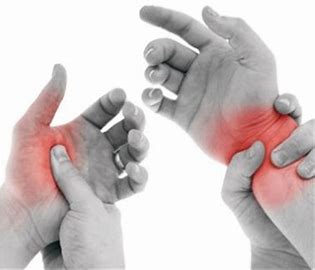You might notice soreness or discomfort at first in your
neck, arms, wrist, fingers or shoulders. Then perhaps you develop tingling, or
have difficulty doing everyday tasks like opening a jar. These symptoms could indicate
Occupational Overuse Syndrome.
Occupational Overuse Syndrome (OOS) is also sometimes called
Repetitive Strain Injury or RSI. It is a type of injury common to fingers,
hands, wrists and elbows that is caused by repetitive movements or awkward postures.
Repetitive manual tasks such as working on a keyboard,
working on an assembly line, or even playing a musical instrument can overwork
and inflame vulnerable tendons. Symptoms include pain, weakness, swelling,
numbness and restricted mobility of the joint.
We usually associate OOS with repetitive hand movements such
as typing, but any part of the body can be affected, including the tendons and
muscles of the fingers, hands, wrists, elbows, shoulders, back and neck.

Who is most at risk?
Any job that calls for fast and repetitive movements, or one
where you have to work in fixed or awkward postures for long periods of time
can trigger OOS. People who work with their hands are most at risk, with
occupations most affected including:
- Office workers – including anyone who uses a keyboard and those doing clerical duties
- Process workers – working on an assembly line and packing
- Piece workers – such as people working in the clothing industry
- Manual workers – such as bricklayers and carpenters
Performing repetitive manual tasks will put stress on your
body. But so too will poor workplace design and poor work practices, such as
furniture, tool or equipment that aren’t comfortable for you; benches or
workstations that are too high, too low, or too far from your body; machinery
that is too fast for user comfort; tight deadlines that mean you don’t take
sufficient breaks; and a workspace design that means you have to repeatedly
bend, stretch or twist.
Don’t ignore OOS
Your OOS will not go away by itself. Over time the
discomfort and pain are likely to get worse without treatment. See your doctor
for treatment, advice and a referral to an appropriate specialist. Also tell
your manager, as there may be adjustments you can make to your workplace, such
as using ergonomically designed furniture and equipment, varying your work
tasks, and scheduling work to include frequent breaks.